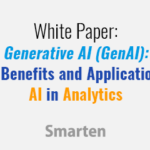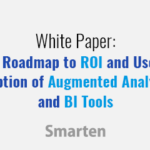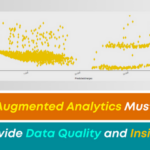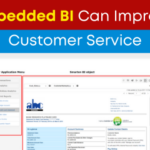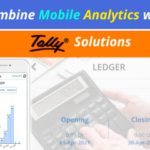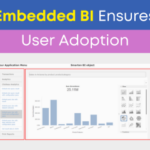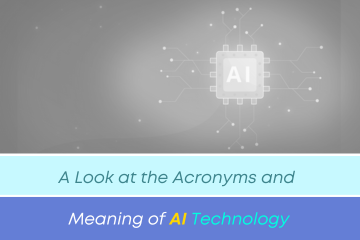
If you are a business owner, an IT professional or a consumer, you have probably heard about artificial intelligence (AI) technologies and the myriad of buzzwords and acronyms that describe the various products, technologies and services. In this article, we will cut through the confusion to provide definitions of the various technologies, vendors and services. And we will discuss the market and how businesses can use AI today to improve their revenue and market share.
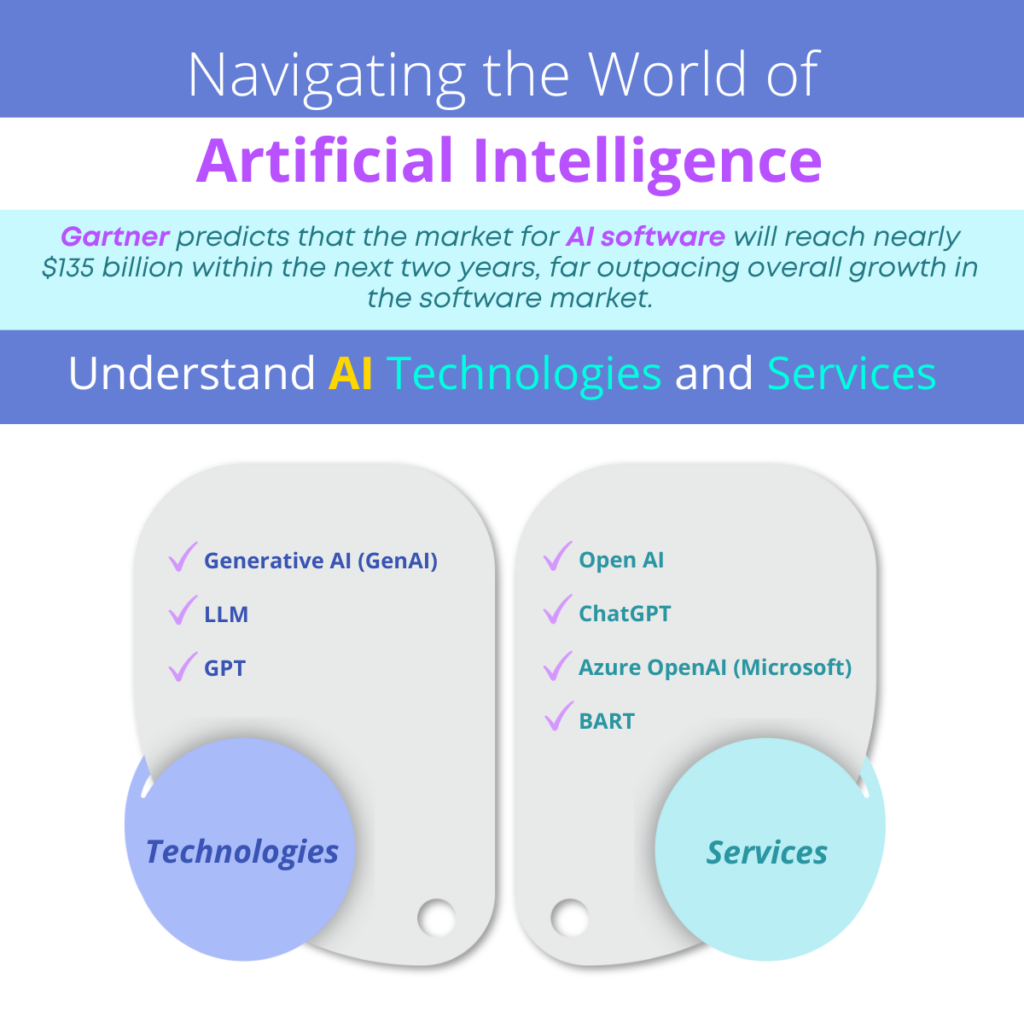
Let’s start with definitions:
Technologies
Artificial Intelligence (AI)
Artificial Intelligence is the ‘intelligence’ provided by technology, software and/or machines, as opposed to the intelligence of humans or other living species. AI is often used as a term to define computer science and its evolution into ‘thought.’ Today, systems developed using AI are used in science, research, government, analytics, etc., and in search engines like Google, as well as to predict and suggest content for users based on user history for businesses like Netflix, Amazon, YouTube, and systems like Alexa and Siri, as well as self-driving vehicles and GPT systems, games of reason like chess, etc. The field of AI includes planning and learning, natural language processing (NLP) and machine learning, as well as reasoning and perception, neural networks, economics, mathematics and statistics.
Generative AI (GenAI)
GenAI represents the field of technology that generates text, media and images using artificial intelligence. This technology ‘learns’ from training data, looking for structure and patterns and then producing or illustrating data that has a similar pattern or structure.
GPT
Generative Pre-Trained Transformers or GPT are families of neural network models used to generate text that mimics human communication and content like music and images. It can answer questions using conversational speech and is used for content generation, text summaries, bots and search responses. Like its cousin, ChatGPT, GPT can understand and generate text but it is not limited to use in a chatbot, so businesses can use it for a broader scope of requirements. GPT is an LLM. GPT is open-source. Its training model is huge, consisting of many terabytes of text data.
LLM
Large Language Models utilize very large data repositories to ‘train’ AI in language and reasoning.
Services
Open AI
OpenAI was founded in 2015 by Elon Musk, Sam Altman and others. As a research organization it works to develop AI and technology with guidelines to support humanity and ethical evolution. Its research library and existing patents are open to the public. OpenAI offers ChatGPT services.
ChatGPT
ChatGPT is a form of AI called a ‘chatbot’ that is built on the foundation of large language models (LLMs). The models are designed to understand, interpret and generate responses that mimic human language responses. These models are built by ‘training’ the system on large volumes of data from books, from the internet and websites, from social media and from articles etc. ChatGPT is specifically designed for chatbots and is more limited in use than GPT. ChatGPT is a transformer. It is not open-source. Its training model is more limited than GPT, with mere millions of parameters.
Azure OpenAI (Microsoft)
Azure OpenAI offers access to language models like GPT-4 and GPT 3.5 Turbo and is available to the public. Users can access Azure OpenAI through REST APIs, Python SDK or Azure OpenAI Studio. It provides guidance for responsible use of AI.
BART
BART (or bidirectional autoregressive transformer) provides summarization and machine translation for AI models to categorize sentences or questions. Like BERT (Google’s version of this transformer), BART uses context from both sides of a word to refine the context and meaning, and to remove the ‘noise’ of incorrect results. BART is the Google version of ChatGPT.
Understanding the AI Market and How to Use AI Today
Gartner predicts that the market for AI software will reach nearly $135 billion within the next two years, far outpacing overall growth in the software market.
The AI market is evolving rapidly and, while AI is not yet suitable for all software solution and application projects, it does provide some real benefits for simple content creation, i.e., email sales communication, reviewing and recommending changes to computer code and augmented customer support.
Businesses can make a limited investment in AI and use chatbots and out-of-the-box AI solutions to create content and to customize the tone or content for a particular culture or country, and the enterprise can simplify content and improve grammar, and summarize content from lengthy articles etc. Chatbots can help to manage schedules and can summarize emails for executives and managers and create replies.
Your business can use AI to:
- Draft offer letters for recruiting
- Create social media posts
- Write public relations announcements
- Write marketing and advertising text
- Create training manuals
- Write reference letters
- Create and sustain tone for branding
- Review and suggest changes to computer code
As you consider AI in your business environment, remember that this is a rapidly changing market and that this technology is in its early stages. Do not bet all of your strategy and operations on AI. Develop a team to review and monitor the use of AI and to establish guidelines and plans, and then adapt those plans as the technology improves and changes.
Artificial Intelligence (AI) and GPT have great potential and this technology is rapidly evolving so it is wise to stay abreast of the advances. If your business wishes to leverage this potential today, it is crucial that your team understands the capabilities and limitations of the technology. With the right IT consulting partner, you can work with GPT in its current state to support your Digital Transformation (Dx) Strategy, and plan for the long-term as AI and GPT evolve. Explore our AI and GPT Articles here. Contact us to find out more.
Original Post : Navigating the World of Artificial Intelligence!



